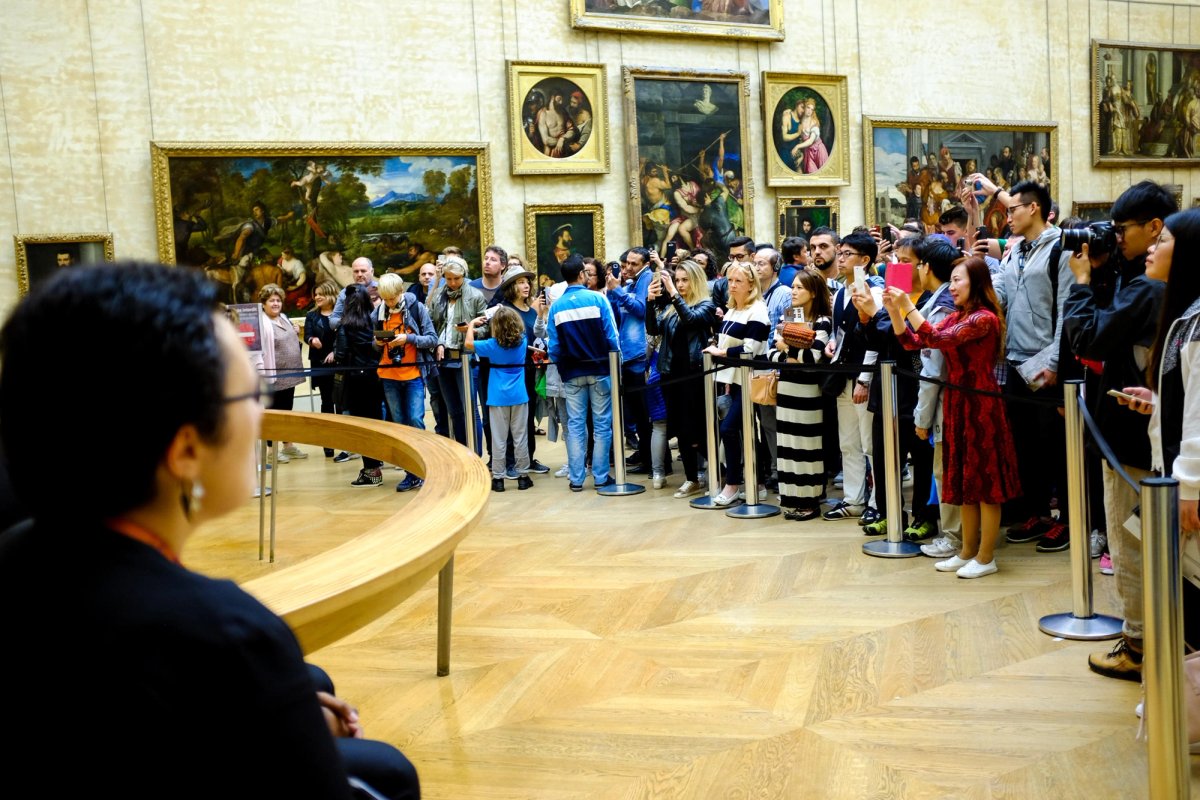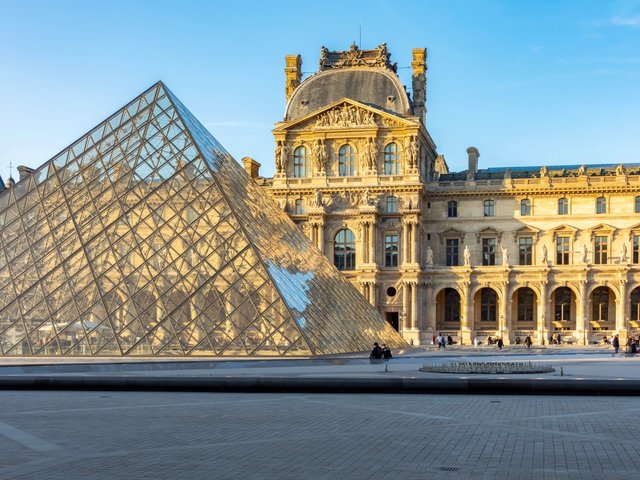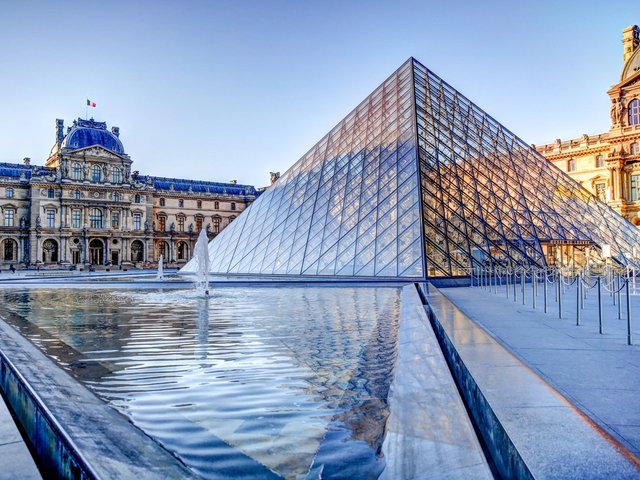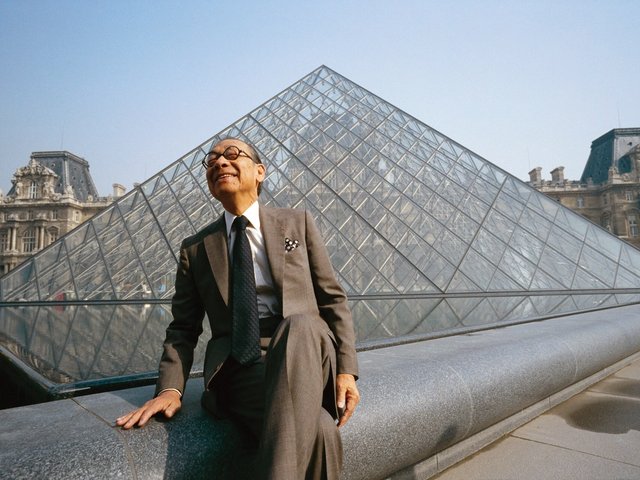Seven people have now been arrested in connection with the Louvre heist perpetrated on 19 October. Since then, the public prosecutor in Paris has announced that three suspects have been charged with organised theft and criminal conspiracy, and one with aiding and abetting. As investigators continue to search for the stolen items, much of the national and international focus has been on the museum’s security protocols, but less on the situation that faces those in charge of implementing them day by day.
On 24 October one of the Louvre security guards who was in the Apollo Gallery at the time of the theft spoke to the France 24 TV station. As one of three guards in the room at the time, she said she had only just started her shift when they experienced what she described as “something very violent”. There was a big noise, which at first she and her colleagues did not understand. “It could have been, as is sometimes the case, a visitor who loses it,” she said. “We then understood that it was a heist. In a few seconds we evacuated everyone who was in the gallery. We closed all the intermediary doors in order to stop the protagonists from going into the other rooms.”
A Paris-based journalist, Jean-Michel Décugis, who has watched the video surveillance of the theft, was, meanwhile, interviewed about it. He said that you could see the two men struggling to cut into the cabinets with grinders and other tools, aggressively hitting the glass with elbows and shoulders and fending off two other security staff and, two minutes later, running for the window. Jewels fell on the ground. The men were then filmed, by helpless security agents, descending via the truck-mounted electric stairs they had entered on, and fleeing on scooters.
These accounts highlight quite how multilayered the day-to-day responsibilities of museum security personnel across the world have become. As Vernon Rapley, the chair of the International Committee for Museum Security at the International Council of Museums, puts it: “There is an enormous amount of pressure on front-of-house staff. And while most will work for 20 to 30 years in a museum and never deal with an incident like this, they will have to deal with someone causing a disturbance, or someone having an argument, or someone objecting to one of the text panels or one of the objects—almost on a daily basis.”
Museums have two major, potentially conflicting, responsibilities: to safeguard [their collections], but also to give access to everyone who wants to see themVernon Rapley, the chair of the International Committee for Museum Security
Museums, he adds, fundamentally have two major, potentially conflicting, responsibilities: “to safeguard [their collections] for future generations, but also to give access to everyone who wants to see them now, whenever they can”. Amid increasingly tight budgets, this balance is growing more complex—with serious potential consequences.
Changing priorities
In the immediate aftermath of the theft, the former French culture minister Aurélie Filippetti appeared on the French parliamentary TV station, Public Sénat, to comment on the political fallout. She highlighted a long-term shift—dictated from the top, that is, from the Ministry of Culture itself—towards prioritising audiences and the visitor experience, including with lucrative temporary exhibitions and events. While that shift has been good and necessary, it has also come at the expense of what was previously the public museum’s primary mission: to protect the objects in its care.
A preliminary report on the state of the Louvre, by France’s official audit institution, Cour des Comptes, which is currently in ministerial consultation and due to be published shortly, appears to confirm Filippetti's concerns. It highlights considerable and persistent delays in bringing the institution up to date, so it can adequately welcome its nine million annual visitors. In particular, it notes that new security systems have tended to focus on temporary exhibition spaces, leaving others much more vulnerable. According to Le Monde, 60% of the rooms in the Sully Wing and 75% in the Richelieu Wing are not protected by video surveillance.
This shift translates into staffing patterns too. Rapley says that 15-20 years ago the proportion of gallery assistants’ focus and responsibilities would have been 70% for security and 30% for visitor experience. “I would argue,” he says, speaking about museums generally, “in the last three or four years, that’s become 80% to 90% visitor experience and 10% to 20% security.” It is not that members of staff cannot do both things, he adds, but simply that a better balance needs to be struck, both in how people are recruited and what they are tasked with.
“My argument for continuing with the discipline of security is that security officers are trained to identify suspicious behaviour,” Rapley says. "They are maybe more likely to challenge behaviour than someone who is focused on the visitor experience; they might be able to prevent a crime before it happens."
Crimes of this sophisticated nature are usually preceded by what criminologists term “hostile reconnaissance” and “penetration testing”, Rapley says. “The first involves coming in and have a look around and seeing where your guards are, where your cameras are and what your locks are. The second is where you maybe set off an alarm, or you try and get through a door you shouldn’t get through to see what the reaction is. You’re not doing anything wrong at that point, but you’re testing what the reaction is to things that you might do. My belief is that security officers, trained and motivated, are better to prevent that than someone who’s there to focus purely on the visitor experience, selling tickets or souvenirs or whatever else.”
Rachel Suteau, the head of the French National Association of Heritage Conservators and Museum Professionals, emphasises the importance of experienced security guards. “Most of the 1,200 museums with the official label, Musées de France, operate with reduced and highly versatile staff (less than ten people is common), regardless of the quality and size of the collection. Even if museums are protected by alarms, cameras and other security systems, nothing can replace human vigilance."
The Louvre did not reply when approached for comment by The Art Newspaper. At a hearing at the French senate on 22 October, the museum’s president, Laurence des Cars, said she had tendered her resignation—which the culture minister Rachida Dati had refused—and acknowledged that the theft was a “terrible failure”. She nonetheless refuted the Cour des Comptes’s findings, stating, “There has been no delay in putting in place the overall security plan for the Louvre.”
So how should museums move forward? Rapley cautions against knee-jerk reactions and single-minded focus on the most recent, or most splashy, crime. “When the British Museum internal theft broke, all museum efforts went on combating inside crime. Which is a threat, and one that some had maybe not paid enough attention to. But it is not the only threat.” For a museum to properly fulfil its purpose, it needs to approach both its staffing and security carefully and holistically.






